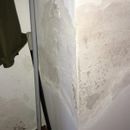Old house – rising damp
Hello Everyone;
So, I have recently started to retrofit an old house (1903) in a mild zone 4 regions.
This house has extensive wall damage (both interior and exterior walls) due to, in my opinion rising damp. All the walls are damaged from the bottom (see attached image).
So, lifting the wall thing to place a capillary break is impossible. Is there any good solution to deal with this problem?
I really don’t want to put tile or any waterproof layer on this region because I am afraid the I will just throw the problem to an elevated portion of the walls.
Thank you in advance
Kind Regards
P
GBA Detail Library
A collection of one thousand construction details organized by climate and house part










Replies
Is there anything you can do to reduce the amount of source water (under the wall)?
Hi Jon,
I don´t think so.
The terrain is already sloped away from the building and I am already collecting the water leaving the roof.
Where was that photo taken? Interior or exterior wall? Basement, first floor? That will all help.
Hi Peter.
This one is an interior wall. But this kind of damage pattern can be seen both in the exterior and interior walls.
Yes, that is probably rising damp. Unfortunately, there's little you can do to stop it. The Brits have loads of different chemical injections that they say can stop it, but from my research, they have somewhat variable performance. Traditionally in the US, masonry walls are plastered and the plaster is considered to be a sacrificial coating. The efflorescence that forms in the plaster slowly destroys it and when it gets bad enough, you scrape off the plaster and reapply. You do this every 50 years or so, and all is good. Except of course that it looks like crap always. We avoid this in modern construction by using capillary breaks all around the masonry to stop moisture from getting in. As you already know, this is hard to do with old houses.